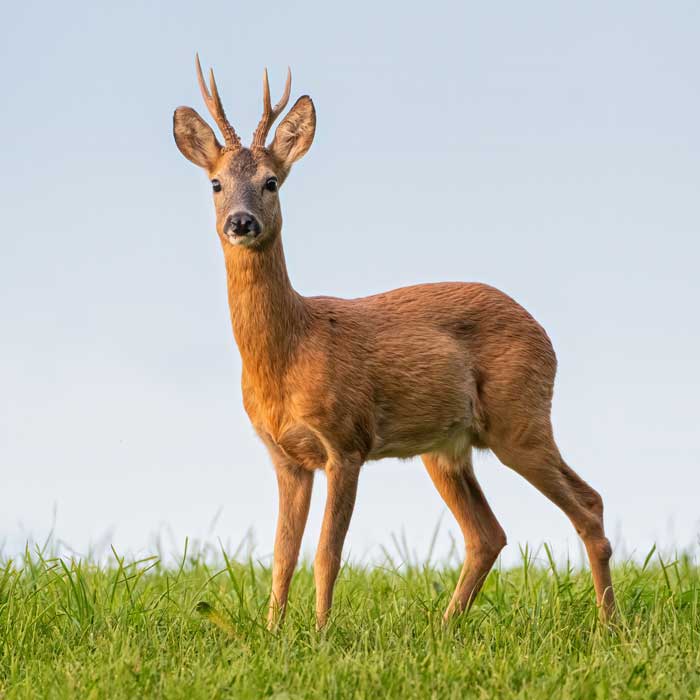
Deer
The roe deer, an elegant forest dweller, is a common wild animal in Europe. This fact sheet provides a detailed overview of the biology and ecology of the roe deer and highlights the importance of its protection and conservation in natural habitats.
Deer Products
-
Animal display fawn
Regular price From 29,90€Regular priceUnit price / per -
Animal display roebuck
5 reviewsRegular price From 119,90€Regular priceUnit price / per -
Animal standee deer
1 reviewRegular price From 109,90€Regular priceUnit price / per -
Starter set - "Black Forest"
7 reviewsRegular price From 399,90€Regular priceUnit price / per -
Life-size deer foot stamp
1 reviewRegular price 12,90€Regular priceUnit price / per -
Life-size deer foot stamp
1 reviewRegular price 159,90€Regular priceUnit price / per -
Animal set - forest animals
3 reviewsRegular price 359,90€Regular priceUnit price / per -
Extension set - "Black Forest"
Regular price From 319,90€Regular priceUnit price / per -
Animal display roebuck - outdoor set
No reviewsRegular price 143,30€Regular priceUnit price / per -
Animal display fawn - outdoor set
No reviewsRegular price 45,50€Regular priceUnit price / per -
Animal display doe - outdoor set
1 reviewRegular price 133,30€Regular priceUnit price / per -
Pop-Up Wall "Forest Habitat"
No reviewsRegular price 300,00€Regular priceUnit price / per -
Pop-Up Wall "Forest Habitat"
No reviewsRegular price From 1.200,00€Regular priceUnit price / per -
Wildlife Sticker Set
No reviewsRegular price From 9,90€Regular priceUnit price / per
Profile: Deer
-
Scientific classification
- Class: Mammalia (mammals)
- Order: Artiodactyla (even-toed ungulates)
- Family: Cervidae (deer)
- Subfamily: Capreolinae (true deer)
- Genus: Capreolus
- Species: Capreolus capreolus (European roe deer)
-
Physical characteristics
- Size: Body length from 95-140 cm
- Shoulder height: 63-75 cm
- Weight: 15-30 kg, depending on gender and region
- Special features: Reddish-brown fur in summer, grey-brown fur in winter, white patch on the buttocks, long, slender legs, ears with black borders.
-
Habitat and distribution
- Common regions: Europe, parts of Asia
- Habitat: Forests, meadows, fields, preferably near water; adaptable to different habitats.
-
Nutrition
- Diet: Herbivore
- Typical food: grasses, herbs, leaves, shoots, buds, fruits, acorns and other fattening crops.
-
Reproduction and lifestyle
- Mating season: July to August
- Gestation period: Approx. 9 months
- Litter size: 1-3 fawns per litter
- Brood care: Females raise the young alone
- Social structure: Mostly in small family groups, solitary outside the mating season.
-
Lifespan and protection status
- Life expectancy: Up to 16 years in the wild
- Endangered status: Not threatened, but habitat loss, poaching and traffic accidents can affect local populations.
- Conservation measures: conservation and protection of habitats, hunting regulation, education on wildlife management.













